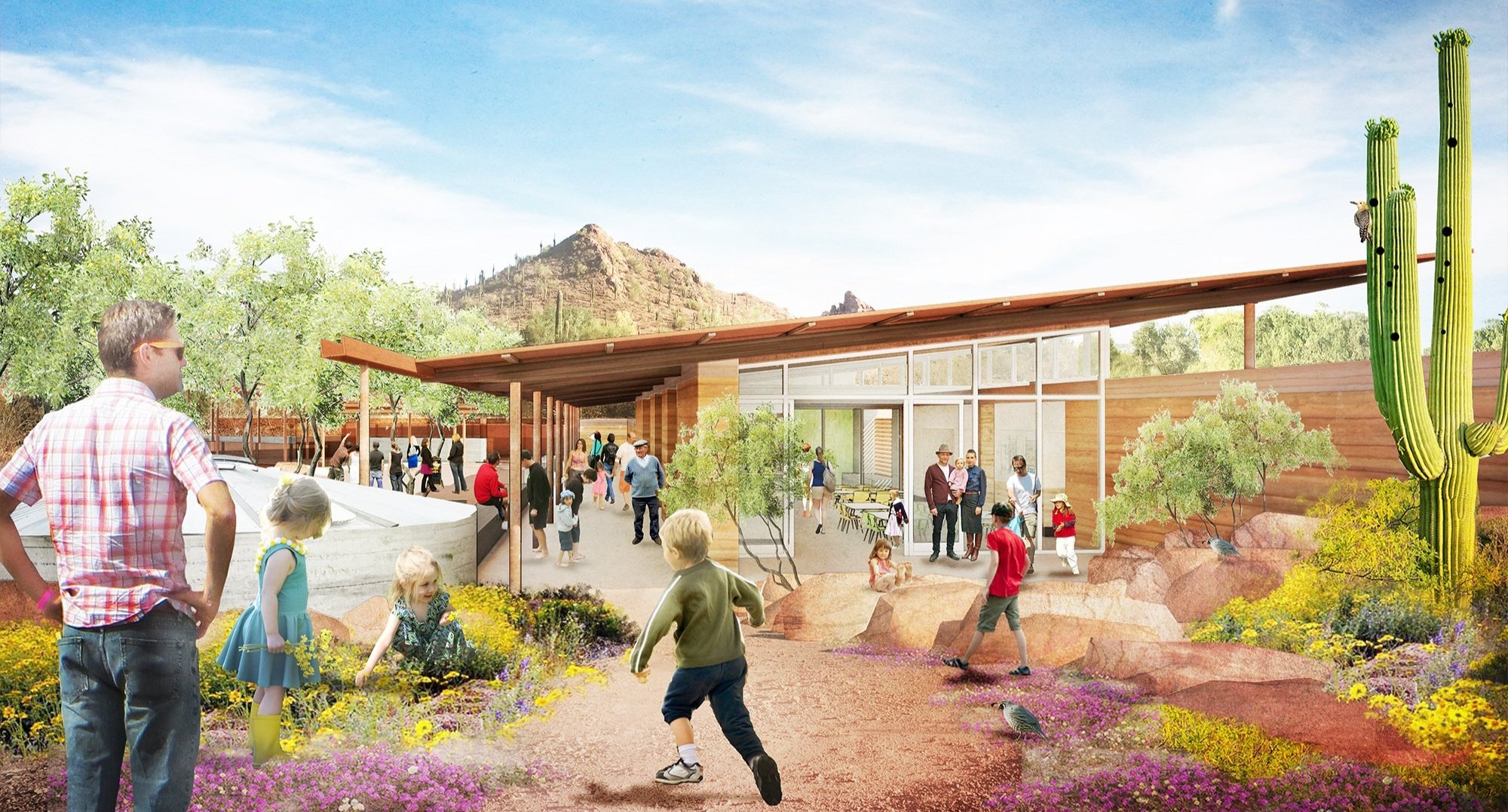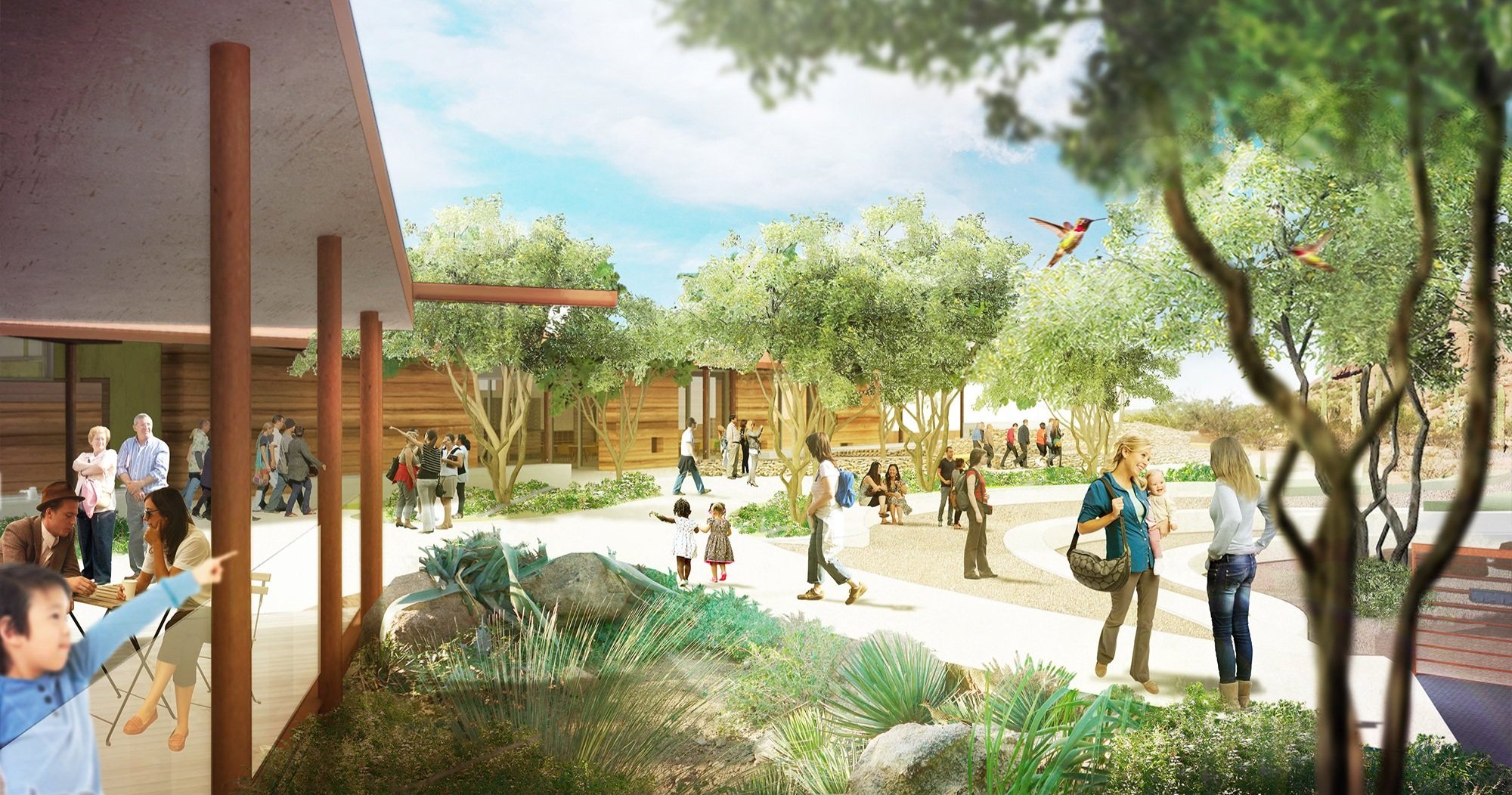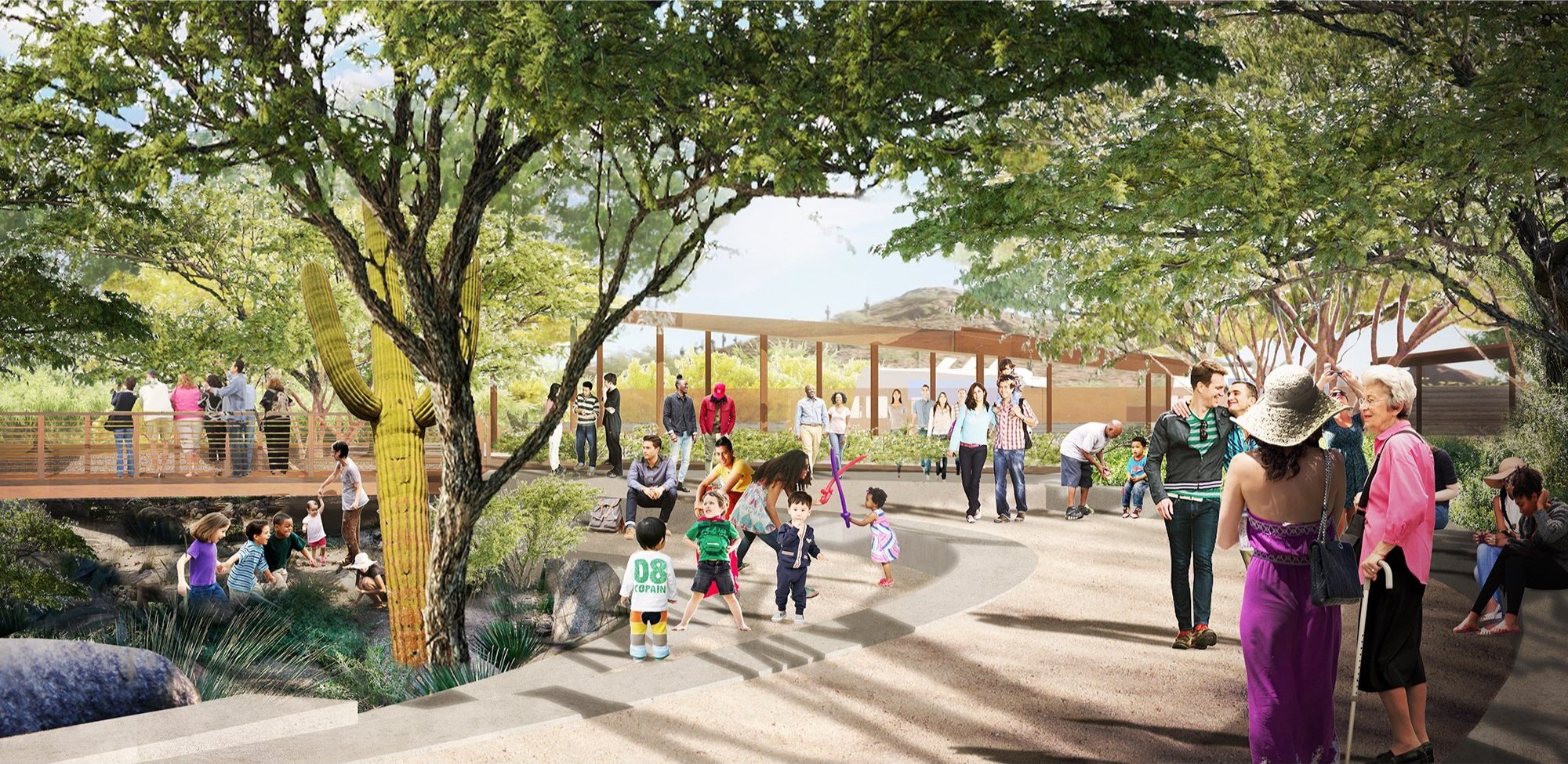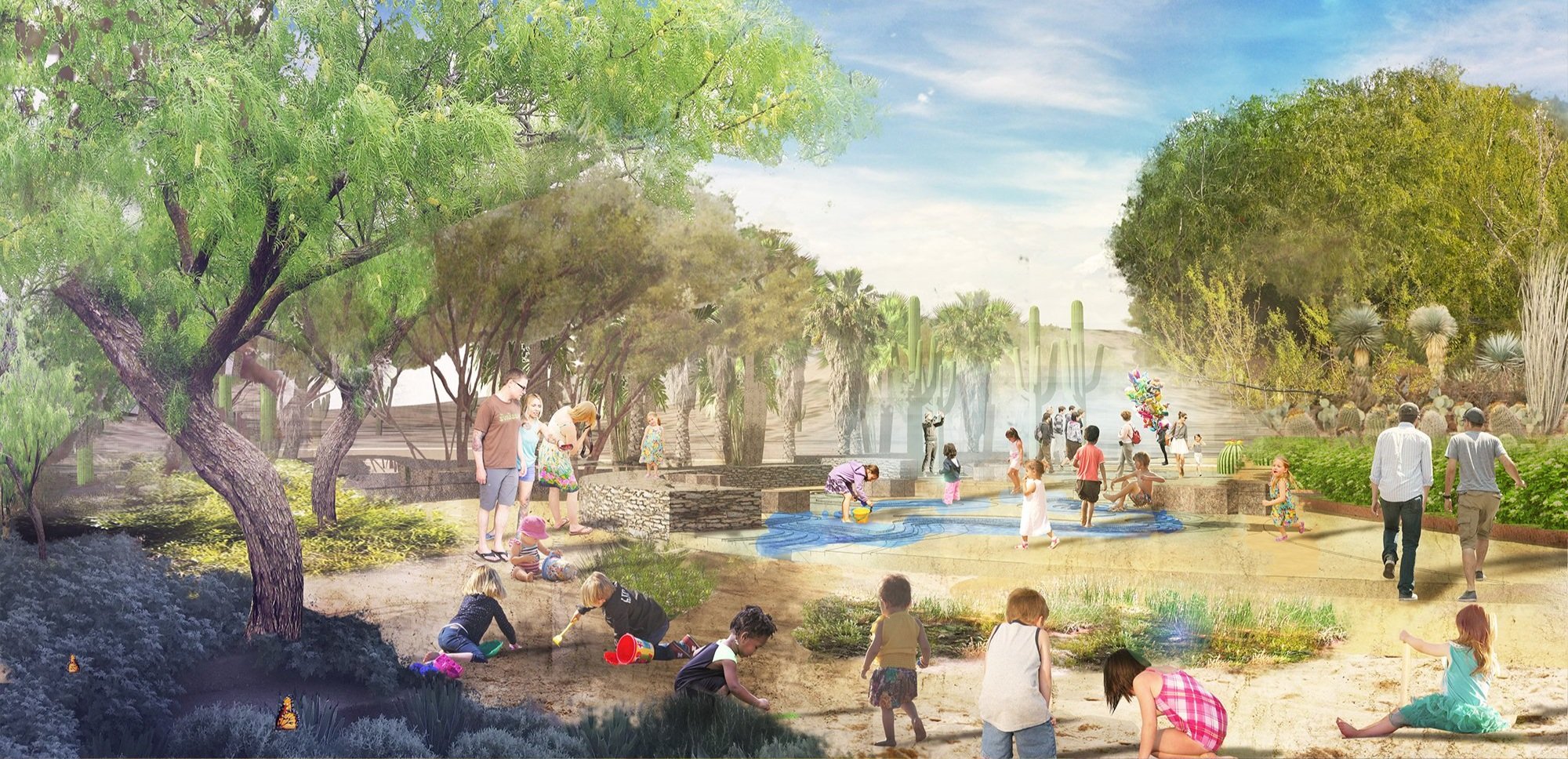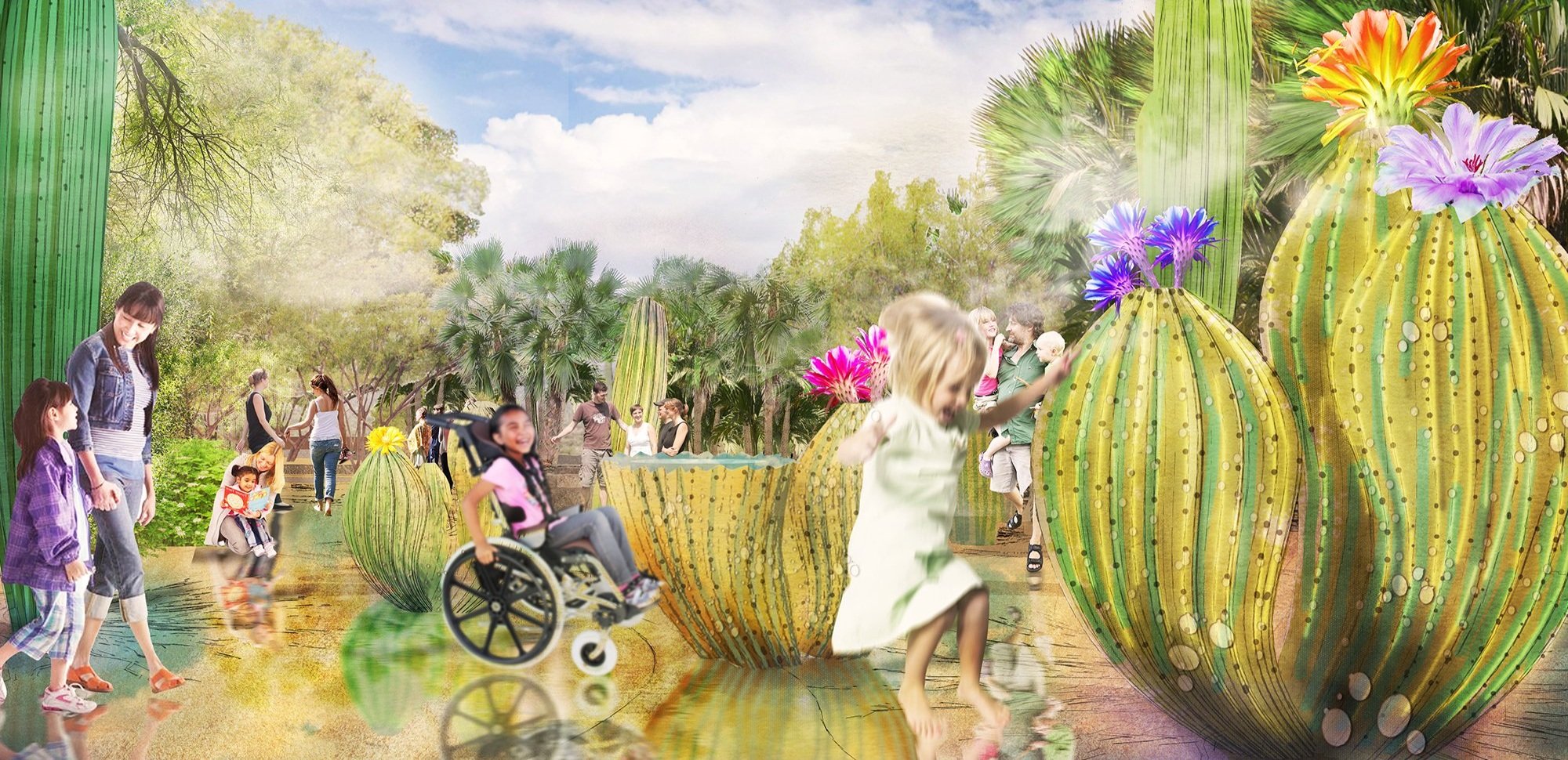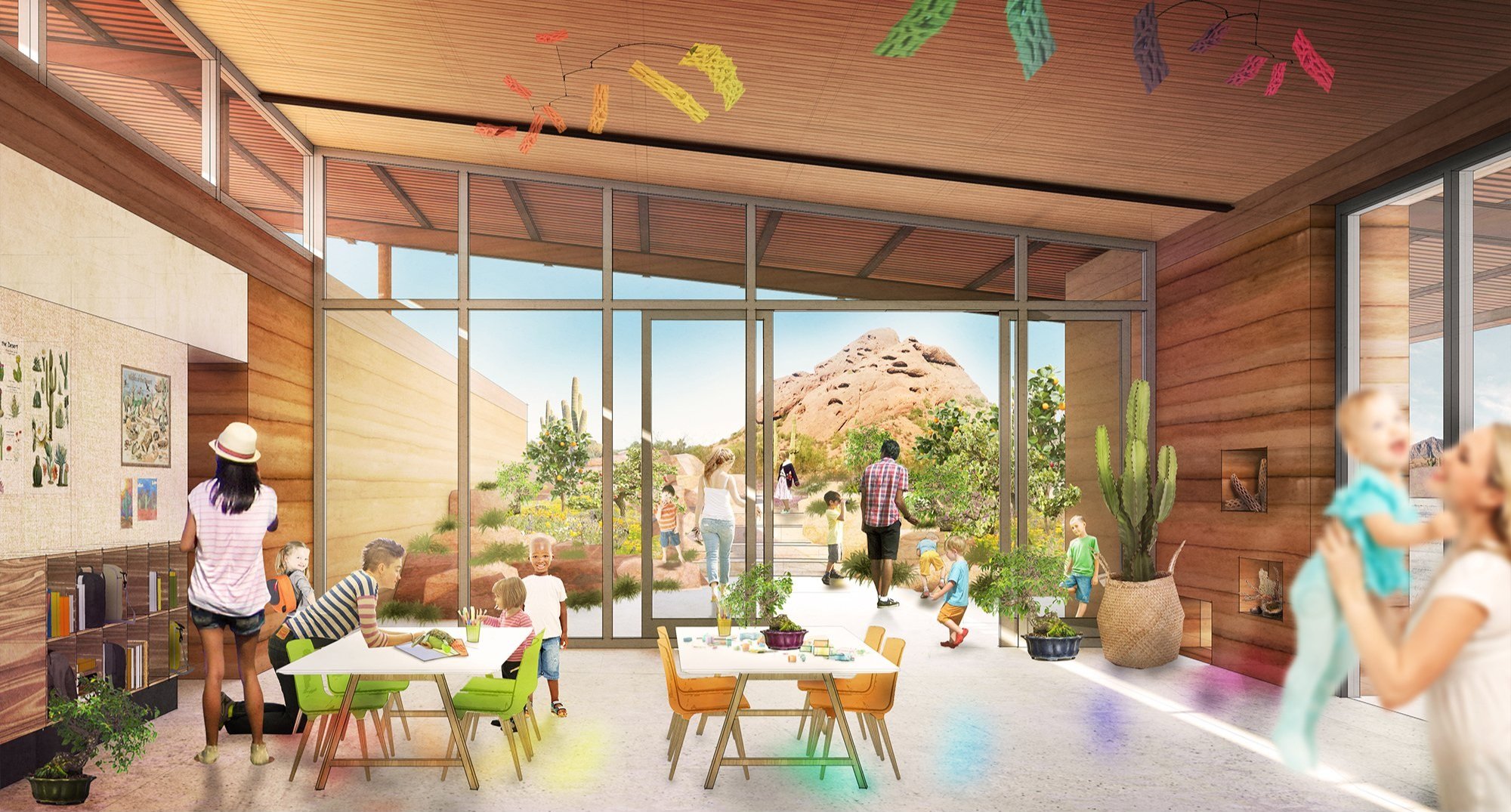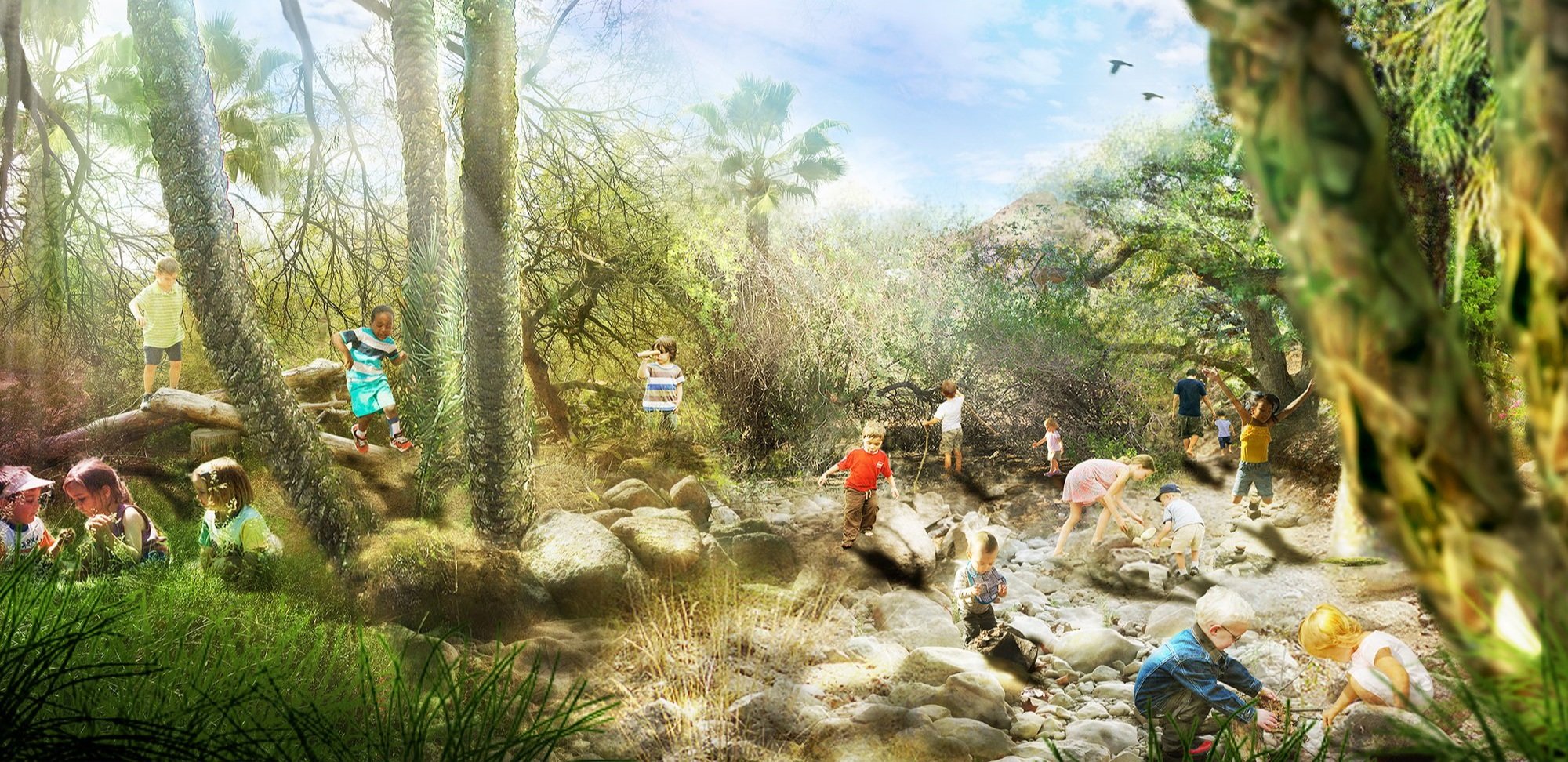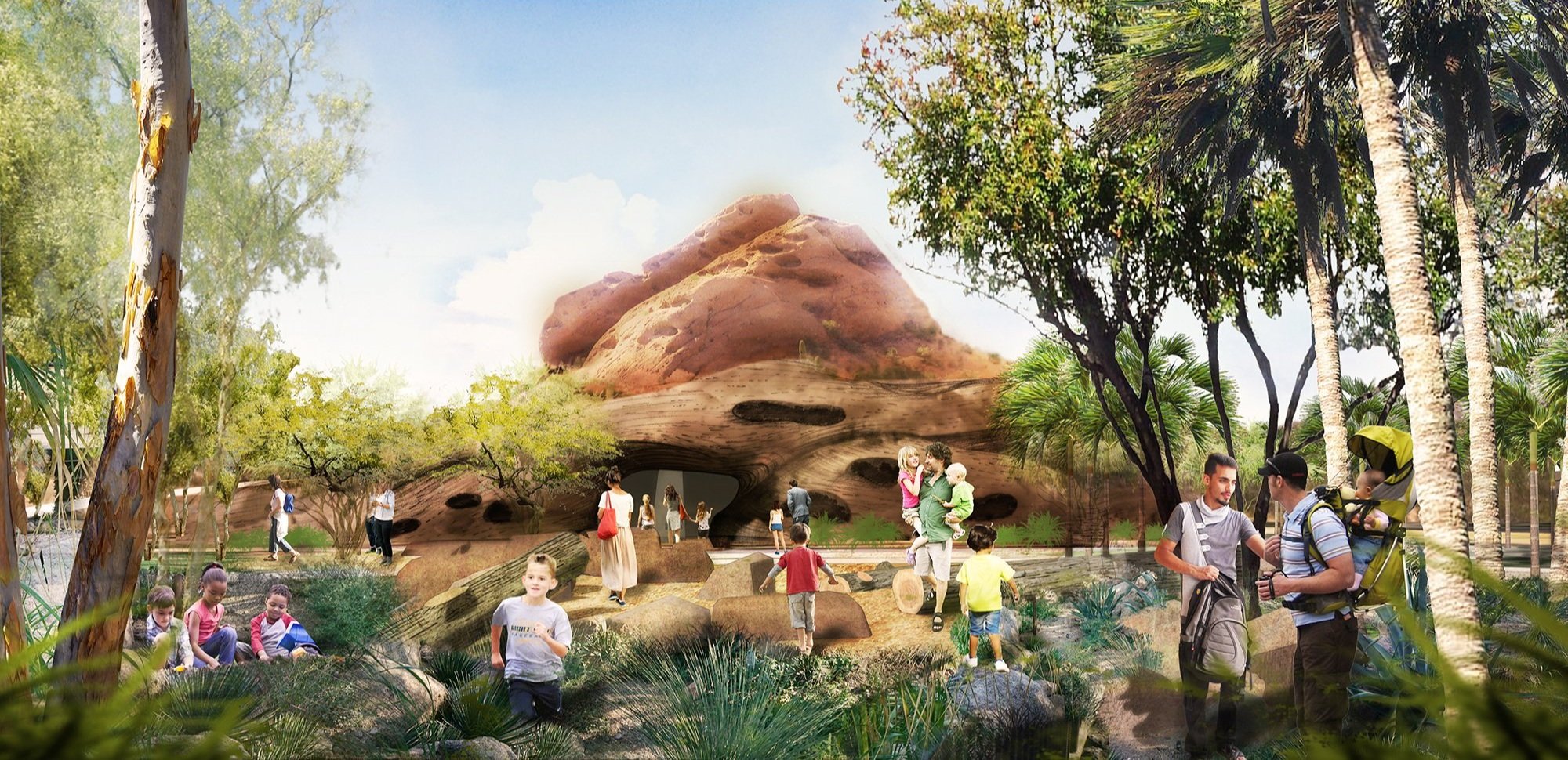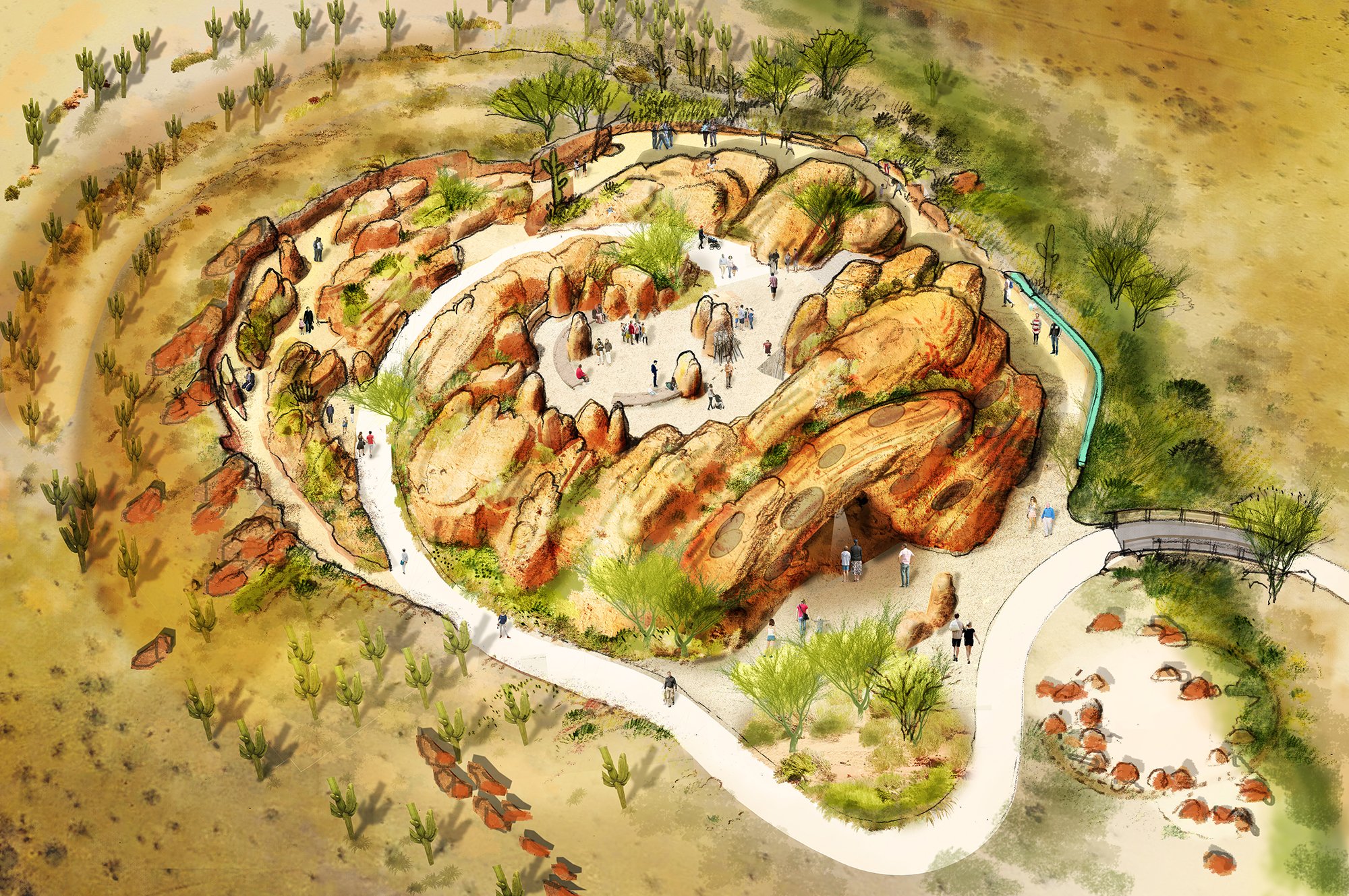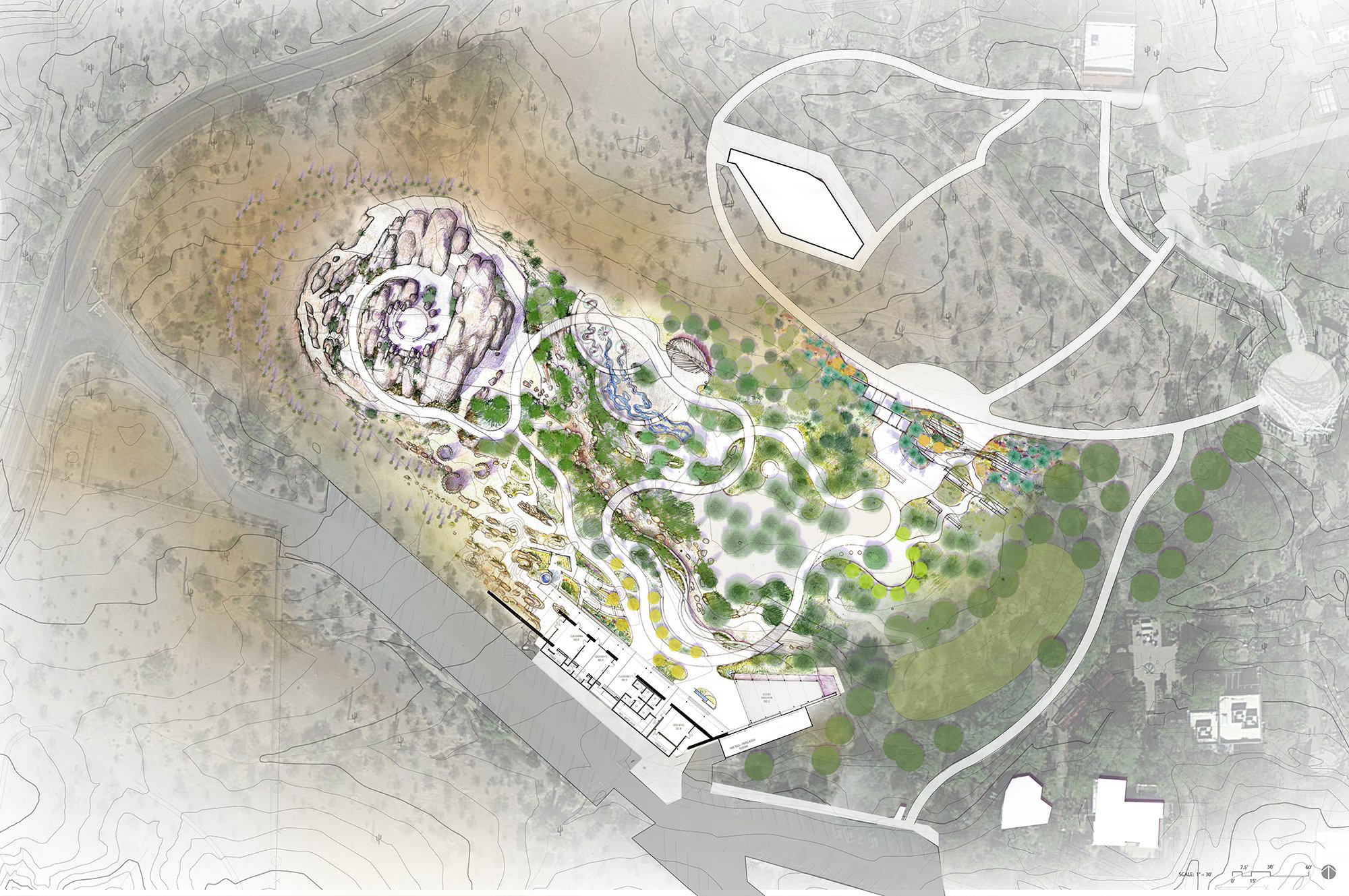Myrna H. Berger Children and Family Garden
The new Children and Family Garden at the Desert Botanical Garden will ignite and inspire lifelong learning about Nature and the desert environment for children and families. Artful, whimsical, and deeply rooted within its Sonoran Desert context, the garden provides rich opportunities for hands-on learning and nature play. The intent is for visitors of all ages to gain appreciation for nature through participation and immersion, reinforcing the Garden’s overall mission: to help people enjoy the beauty of the desert – and care for it.
-
Using art as a bridge between science and people, the garden master plan integrates art elements to reveal the natural systems and phenomena that make the desert so unique. These interpretive pieces are whimsical and interactive, further encouraging children and families to observe and learn through play. An entry gateway and canopy interpreting a landscape shaped by wind; cactus sculptures demonstrating water storage mechanisms observed in intricate patterns; a water collection exhibit highlighting the precious role of water in the desert; and a giant “Cactus Village” displaying the life cycle of a saguaro cactus – each piece of the garden tells a powerful story.
Nature play and hands-on learning opportunities within the garden invite a wide range of age groups to participate in both facilitated and independent experiences that many children may not have access to at home or at school. Recent research indicates that nature experiences providing opportunities for imagination, self-expression, movement, and collaboration contributes to the successful development of the whole child, resulting in a healthy, engaged, and environmentally-literate community members. With this in mind, the potential impact of the garden for children and families is significant as a way of connecting to nature and the desert environment, improving overall health and well-being, and inspiring future engagement and stewardship.
The master plan was conducted in collaboration with Lake | Flato Architects and the Natural Learning Initiative.
